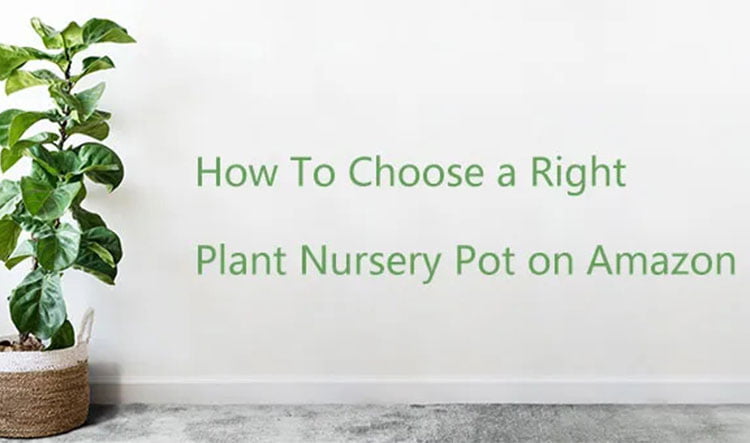How to Take Care of a Bonsai Tree—for Beginners!
How to Take Care of a Bonsai Tree—for Beginners! Learning how to take care of a bonsai tree is more complex than your average indoor plant, some basic rules should be followed to take care of your tree properly. This beginner guide may help you grow a bonsai tree that will last for years. Placement Begin to grow a bonsai tree, you need to place it in the right place at first. To determine the optimal spot to place your bonsai, you need to know the tree species and in particular, is your bonsai an indoor or an outdoor tree? Such as pine, juniper, maple, elms gingko and spruce trees all are outdoor trees, so they need be exposed to the seasons like other larger outdoor plants. They will grow better under ample sun exposure, except when you live in a particularly hot place. Such as jade plants, ficus trees, and hawaiian umbrella trees are indoor trees, most types of indoor trees are typically subtropical species, which need to grow in stable…
How To Choose a Right Plant Nursery Pot on Amazon
How To Choose a Right Plant Nursery Pot on Amazon Plants embellish the interiors and exteriors, and they can make your apartment more comfortable and add color to your garden, terrace, or balcony. Now you have your greenhouse all set and ready in your backyard, one more crucial step remains. Choosing the right nursery pot for your plants, it is not just a matter of aesthetics. Instead, the ideal pot will also promote growth and health. Points to Consider When Choosing a Plant Nursery Pot Choosing a right plant nursery pot is not an easy task, you need to find the one that best fits the plant you want to take care of. You’ll have to consider these factors to help you choose the right pots for your garden. Size The size of plant nursery pot matters a lot. If the size is too big for your plant, the plant will tip over, and a bigger one needs more soil, which means more…
ZZ Plant
This plant thrives even in low light levels. Dean Schoeppner. ZZ Plant Overview DESCRIPTION Sporting leaves that appear to have been polished to a magnificent luster, ZZ plant adds bold texture to indoor gardens. ZZ plant is also called arum fern, cardboard palm, eternity plant, and aroid palm. This easy-to-grow houseplant thrives in low light conditions, such as that from east- or north-facing windows. With its good looks and easy-going nature, ZZ plant is perfect for anyone who claims they can’t keep houseplants alive. GENUS NAME Zamioculcas zamiifolia COMMON NAME ZZ Plant PLANT TYPE Houseplant HEIGHT 1 to 3 feet WIDTH 2 to 3 feet SPECIAL FEATURES Low Maintenance PROPAGATION Division, Leaf Cuttings, Stem Cuttings ZZ Plant Appearance Native to warm, arid, shaded landscapes in east Africa and South Africa, ZZ plant is right at home in dry interior settings. This houseplant has short stems. Its leaves often seem to…
How to Plant and Grow Zinnia
This annual is one of the most carefree and colorful plants you can grow. Peter Krumhardt. Zinnias come in many shapes, sizes, and colors (excluding blue) and are some of the toughest annuals you can plant. Zinnias are a favorite with pollinators such as hummingbirds, bees, and butterflies that land on the flowers and drink their nectar. Tall varieties are an excellent choice for cut flowers, with options that include cactus and quill-type blooms with long, narrow petals and pompom-type blooms that look like little spheres. Since zinnias come in a variety of colors, they work well in almost any flower arrangement. While tall zinnias suit cottage and cutting gardens, their lower-growing, mounding or spreading varieties work well in containers. They also require less frequent deadheading than their taller counterparts. Zinnia Overview GENUS NAME Zinnia COMMON NAME Zinnia PLANT TYPE Annual LIGHT Sun HEIGHT 1 to 4 feet WIDTH 1 to 2…
How to Grow and Care for Zebra Plants
This striking houseplant will add a bold splash of color to your home. PHOTO: DEAN SCHOEPPNER One look at the bold white stripes on a zebra plant (Aphelandra squarrosa) will tell you how it got its name. In addition to their striking striped leaves, these beautiful plants are sure to attract attention with their lush tropical look. When in bloom, these South American natives produce beautiful yellow flower spikes that can last for weeks. Zebra plants are usually grown as houseplants, but in warmer regions, they’ll grow outdoors where their flowers attract hummingbirds and butterflies. Zebra Plant Overview GENUS NAME Aphelandra squarrosa COMMON NAME Zebra Plant PLANT TYPE Houseplant, Perennial LIGHT Part Sun HEIGHT null to 2 Feet WIDTH null to 1 Foot FLOWER COLOR Yellow FOLIAGE COLOR Blue/Green ZONES 10, 11 PROPAGATION Leaf Cuttings, Stem Cuttings Where to Grow Zebra Plants In warmer parts of the country such as Florida and Southern California,…
How to Plant and Grow Yucca
These drought-tolerant plants are the rock stars of the full-sun garden. These tough plants are rock stars in a full-sun garden and can stand up to some serious drought. Grown primarily for their showy evergreen foliage, some yuccas put on candelabra-like blossoms. Not only do these plants work well in a dry garden as an architectural accent, but they also make a prized container plant. But do be careful; if they are planted in anything other than well-drained soil, yuccas can develop root rot. Avoid planting them near walkways because of their thorny tips. The foliage of the yucca is the main draw for growing these plants. The leaves come in a variety of colors, most often a silvery green. You can also find them in variegated varieties with gold, green, cream, blue, and even pink, in the right season. Some yuccas have thread-like filaments that curl off the edge…
How to Plant and Grow Yew Shrub
Tolerant of most growing conditions, yew shrubs make excellent hedges. If you’re looking for a shrub that stands up to most anything, yew found it! These plants are tolerant of many conditions, from drought and shade to sun and moist soil. With a little annual maintenance, you can keep these shrubs shaped into all sorts of different designs. With more than 400 registered cultivars to choose from, you have plenty of options when it comes to yews. Initially, there were only different species available from varying climates and regions, but most commercially available modern-day yews are hybrids of several species. This allows them to display the best traits of their many different parents, as well as making them adaptable to more gardens. Be careful planting yew shrubs around children1 and animals2 because most parts of the plant are toxic if ingested, even when dried. Yew plants create an extremely toxic compound in…
Yellow Wax Bells
Yellow Wax Bells Overview DESCRIPTION A perennial with a shape and stems reminiscent of a woody shrub, yellow wax bells are named for their pretty late-summer flowers. The plant’s pendulous clusters of yellow pearl-size buds open into dainty, nodding bells. When the flowers are not in bloom, its maple-like leaves are a great backdrop for other shade-garden plants. Though it’s not a common plant, it’s easy to grow and pest-resistant, and deserves a home in almost any shade garden. GENUS NAME Kirengeshoma COMMON NAME Yellow Wax Bells PLANT TYPE Perennial LIGHT Part Sun HEIGHT 1 to 3 feet WIDTH 1 to 3 feet FOLIAGE COLOR Chartreuse/Gold SEASON FEATURES Colorful Fall Foliage, Fall Bloom, Summer Bloom SPECIAL FEATURES Good for Containers ZONES 5, 6, 7, 8 PROPAGATION Division, Seed Colorful Combinations Yellow wax bells are just one of many plants that thrive in shade and also add a burst of color,…
Yellow Strawflower
Yellow Strawflower Overview DESCRIPTION A perfect pick for hanging baskets and other containers that tend to dry out, strawflower loves a hot spot. It rewards you with clusters of golden-yellow flowers all summer and into fall. Because of its trailing habit, it’s perfect to spill over the side of a container — or use it as an annual groundcover in your garden. GENUS NAME Flambe Yellow _Chrysocephalum apiculatum COMMON NAME Yellow Strawflower PLANT TYPE Annual LIGHT Sun HEIGHT 6 to 6 inches WIDTH null to 24 inches FOLIAGE COLOR Chartreuse/Gold, Gray/Silver SEASON FEATURES Summer Bloom SPECIAL FEATURES Good for Containers ZONES 10, 11, 2, 3, 4, 5, 6, 7, 8, 9 PROPAGATION Seed PROBLEM SOLVERS Drought Tolerant
How to Plant and Grow Yellow Bells
This tough shrub can grace your garden with beautiful flowers for months. Add bright color to your garden with Tecoma stans (yellow bells), a large tropical shrub with dark green compound leaves and bright golden-yellow flowers. Native to many southern states and parts of Central America, this plant is extremely heat- and drought-tolerant; it can withstand the hottest summer weather. Yellow bells shrubs bloom from June until frost. With its profuse number of large trumpet-shaped blooms, yellow bells stand out in most gardens. Though not fragrant, the flowers (especially red) are a favorite of hummingbirds and other pollinators like bees and butterflies. Plus, the glossy green foliage makes a beautiful backdrop for other plants when not in bloom. As they age, the plants can develop an attractive gray-brown corky bark. Recent breeding breakthroughs have expanded yellow bells’ color options to orange and red blossoms. Breeders are also attempting to create a smaller, more compact…
How to Plant and Grow Yarrow
This tough plant produces pretty, long-lasting flowers that attract scores of pollinators. Yarrow is a classic garden perennial known for its ruggedness. It shrugs off cold winters, hot and humid summers, drought, and poor soils to cheerfully bloom in sunny places. With its tall stems of colorful flowers and fern-like foliage, it works especially well in a cottage garden setting and in wildflower gardens. While yarrow is not currently classified as invasive by the USDA in any region, its growth habits are being closely watched1 as yarrow has a tendency to become weedy if not properly managed. Yarrow is considered toxic to dogs, cats, and horses,2 but reactions are rare because it produces a very bitter taste. Yarrow may also cause an allergic skin reaction3 when touched by those who are susceptible. Yarrow Overview GENUS NAME Achillea COMMON NAME Yarrow PLANT TYPE Herb, Perennial LIGHT Sun HEIGHT 6 to 24 inches WIDTH 2 to…
How to Plant and Grow Witch Hazel
The flowers of this shrub may be small, but they make up for it in quantity and fragrance. When you hear the name witch hazel, you may think of skin care products, but this large shrub (or small tree, depending on whom you ask) should be on every gardener’s wish list. The golden-yellow flowers of witch hazel (Hamamelis spp.) release a spicy scent when they bloom in the fall and winter. Although they are small, witch hazel blossoms are worth planting the shrub. Depending on the species, witch hazel blooms at odd times, usually when few other flowers are out. The blooms are generally not much bigger than a penny, composed of ribbonlike petals in a variety of colors, including orange, yellow, red, pink, and purple. What these little flowers lack in size, they make up for in quantity and timing. Adam Albright. One of the U.S. native species, vernal witch hazel, blooms in late winter to…




